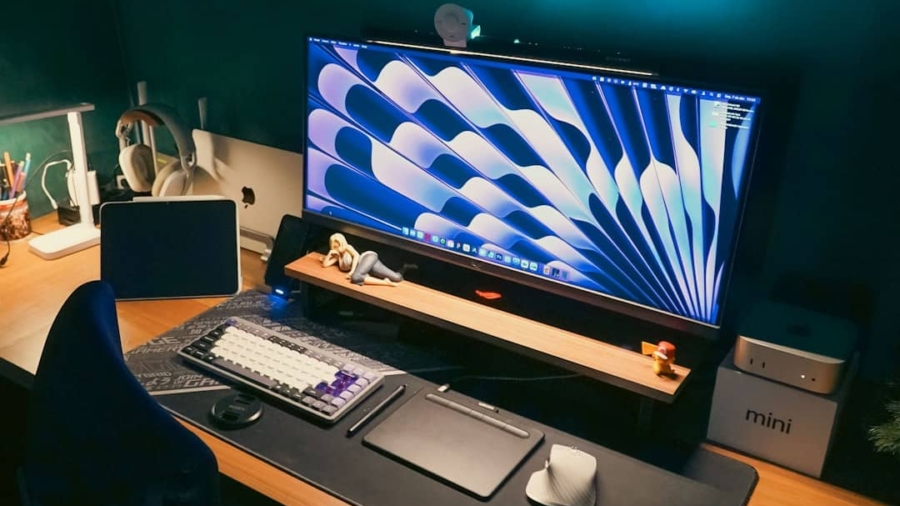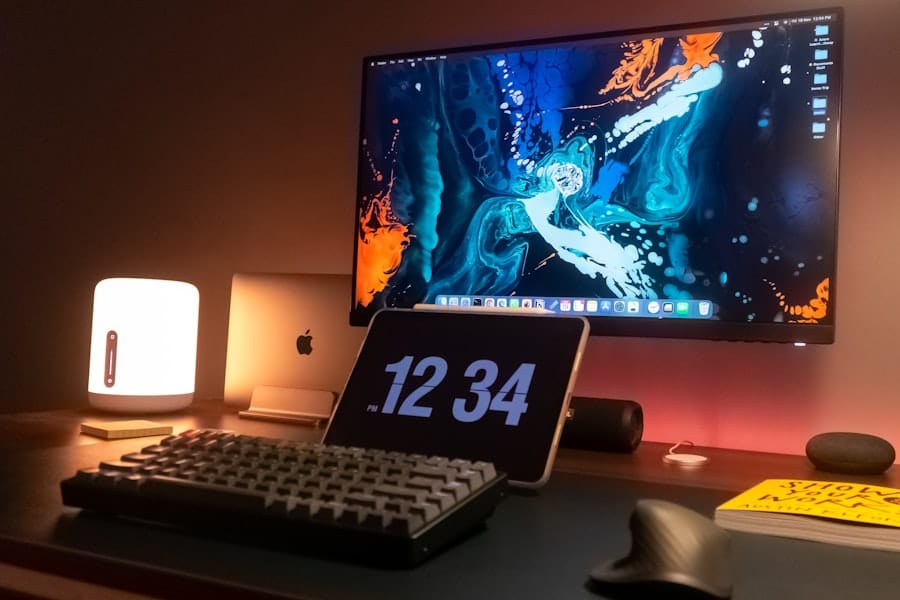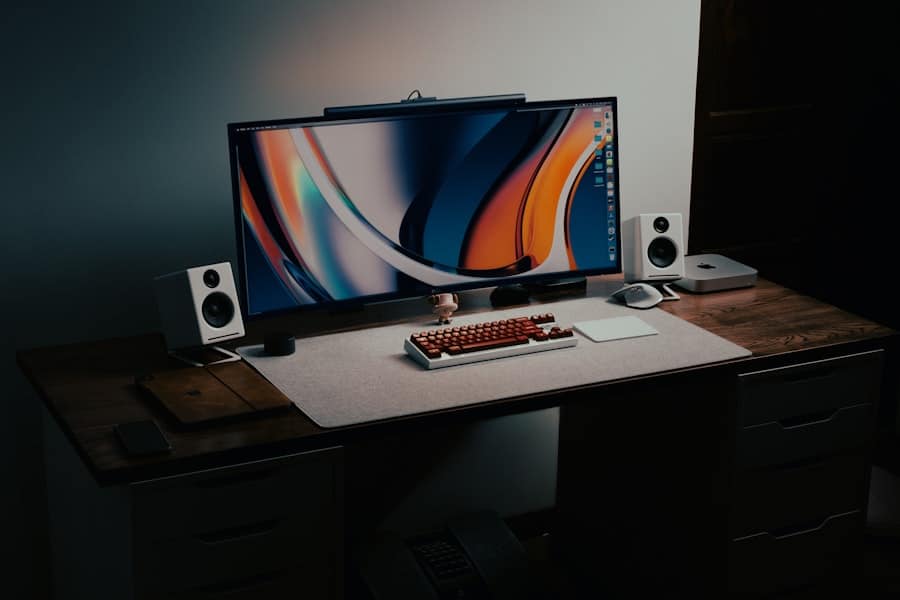A clear desktop is more than just an aesthetic choice; it serves as a foundational element for productivity and mental clarity. In an age where digital distractions are rampant, the state of one’s desktop can significantly influence focus and efficiency. A cluttered desktop, filled with unorganized files, applications, and shortcuts, can lead to cognitive overload.
This overload can manifest as stress or anxiety, making it difficult to concentrate on tasks at hand. Conversely, a clean and organized desktop fosters a sense of control and order, allowing individuals to navigate their digital environment with ease. Moreover, a well-maintained desktop can enhance workflow efficiency.
When files and applications are easily accessible, users can save precious time that would otherwise be spent searching for misplaced documents or applications. This efficiency is particularly crucial in professional settings where time is often equated with money. A clear desktop not only streamlines the process of finding necessary resources but also minimizes the likelihood of errors that can occur when working in a chaotic environment.
Thus, understanding the importance of a clear desktop is the first step toward creating a more productive and less stressful digital workspace.
Key Takeaways
- A clear desktop is important for improved productivity and focus
- Assess the current state of your desktop to understand the level of clutter
- Create a system for organizing files and folders to maintain a tidy desktop
- Utilize desktop organization tools and apps to streamline the process
- Establish a routine for regular desktop maintenance to prevent clutter buildup
Assessing the Current State of Your Desktop
Evaluating Your Digital Clutter
Begin by identifying what is essential and what can be discarded. This process may involve reviewing documents that have not been accessed in months or even years. By categorizing files into “keep,” “delete,” and “archive” piles, you can gain clarity on what truly needs to remain on your desktop.
Optimizing Your Desktop Layout
Additionally, consider the layout of your desktop. Are there applications that you use frequently but are buried under layers of clutter? Are there shortcuts that serve no purpose? Evaluating the arrangement of icons and folders can reveal inefficiencies in your workflow.
Rethinking Your Workflow
For instance, if you find yourself constantly searching for a specific application or file, it may be time to rethink its placement. This assessment phase is crucial as it lays the groundwork for a more organized and functional digital workspace.
Creating a System for Organizing Files and Folders
Once you have assessed the current state of your desktop, the next step is to create a systematic approach to organizing files and folders. A well-structured system not only enhances accessibility but also promotes consistency in how files are managed over time. One effective method is to categorize files based on their type or purpose.
For example, you might create folders for work-related documents, personal files, and projects. Within these main categories, further subfolders can be established to refine organization even more. Another strategy involves implementing a naming convention for files that makes them easily identifiable.
Instead of generic names like “Document1” or “Untitled,” consider using descriptive titles that include dates or project names. This practice not only aids in quick identification but also helps in maintaining order as new files are added over time. By establishing a clear system for organizing files and folders, you create an environment where information is readily accessible, reducing frustration and enhancing productivity.
Utilizing Desktop Organization Tools and Apps
In today’s digital landscape, numerous tools and applications are available to assist with desktop organization. These tools can automate aspects of file management, making it easier to maintain an organized workspace. For instance, applications like Trello or Asana can help manage tasks and projects visually, allowing users to keep track of their responsibilities without cluttering their desktops with numerous files.
These platforms provide a centralized location for project management, reducing the need for multiple documents scattered across the screen. Additionally, cloud storage solutions such as Google Drive or Dropbox offer an effective way to keep files organized while freeing up local storage space on your computer. By storing files in the cloud, users can access them from any device with internet connectivity, which enhances flexibility and reduces desktop clutter.
Furthermore, many of these services come equipped with organizational features such as tagging and folder structures that facilitate easy retrieval of documents. Utilizing these tools not only streamlines file management but also contributes to a more efficient digital workspace.
Establishing a Routine for Regular Desktop Maintenance
Creating an organized desktop is not a one-time task; it requires ongoing maintenance to ensure that clutter does not accumulate again. Establishing a routine for regular desktop maintenance is essential for sustaining an efficient workspace.
During this maintenance period, users should assess whether any new files need to be categorized or if outdated documents can be deleted. Incorporating maintenance into your schedule can also include daily practices such as tidying up at the end of each workday. Taking just a few minutes to close unnecessary applications, delete temporary files, or move completed projects to an archive folder can prevent clutter from building up over time.
By making desktop maintenance a habitual practice, individuals can ensure that their digital workspace remains conducive to productivity and creativity.
Streamlining Your Digital Workspace
Streamlining your digital workspace goes beyond just organizing files; it encompasses optimizing the entire environment in which you work. This process may involve customizing your desktop settings to enhance usability and comfort.
A clean background image can also reduce visual distractions, allowing for better focus on tasks. Additionally, consider minimizing the number of applications running simultaneously on your desktop. Each open application consumes system resources and can lead to decreased performance over time.
By closing unused programs and limiting background processes, users can enhance their computer’s speed and responsiveness. Streamlining your digital workspace ultimately leads to a more efficient working environment where distractions are minimized, and productivity is maximized.
Managing Notifications and Distractions
In an increasingly connected world, managing notifications is crucial for maintaining focus and productivity. Notifications from emails, messaging apps, social media platforms, and other software can disrupt concentration and lead to fragmented attention spans. To combat this issue, consider customizing notification settings across various applications to minimize interruptions during work hours.
For example, setting specific times to check emails or messages can help create dedicated periods of focused work without constant distractions. Furthermore, utilizing features such as “Do Not Disturb” mode on devices can significantly reduce interruptions during critical tasks. This feature allows users to silence notifications temporarily while still enabling important calls or alerts to come through if necessary.
By actively managing notifications and minimizing distractions, individuals can cultivate an environment that supports sustained focus and enhances overall productivity.
Maintaining a Clutter-Free Desktop for Improved Productivity
The ultimate goal of organizing your desktop is to maintain a clutter-free environment that promotes improved productivity. A clean desktop not only enhances visual appeal but also contributes to mental clarity and focus. Research has shown that individuals who work in organized spaces tend to experience lower levels of stress and higher levels of satisfaction in their work.
This correlation underscores the importance of maintaining an orderly digital workspace. To achieve this goal consistently, it is essential to adopt habits that prioritize cleanliness and organization in daily routines. Regularly reviewing files, adhering to established naming conventions, and utilizing organizational tools are all practices that contribute to a clutter-free desktop over time.
By committing to these habits and recognizing the positive impact they have on productivity, individuals can create a sustainable environment that fosters creativity and efficiency in their work endeavors.
If you’re looking to improve your focus and productivity, decluttering your desktop is a great place to start. By organizing your digital workspace, you can reduce distractions and create a more efficient work environment. For more tips on how to optimize your online presence for better results, check out this article on the best niche for affiliate marketing in TikTok




